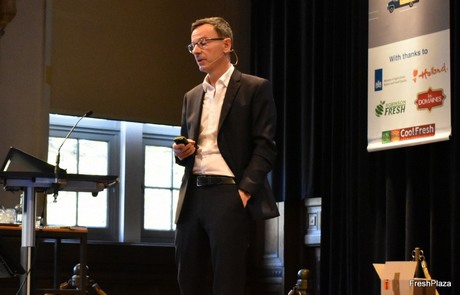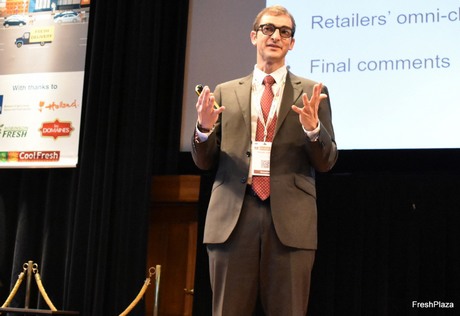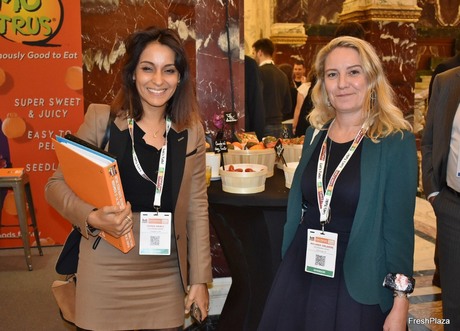This week the Amsterdam Produce Summit took place with a focus on Omni-channel retail, in between the speakers there was plenty of time for networking and to take some photos!

Click here for the photo report

During his presentation Stéphane Roger of Kantar Worldpanel pointed to fresh food's low share in online trading, but its importance to ecommerce will increase as the population ages as well as riding on a general growth trend in fresh and healthy food sales. The era of big growth in FMCG (fast-moving consumer goods) is over, giving way to a current era of price wars to win market share as well as the necessity to expand ecommerce into emerging markets.
"In all markets fresh produce is undertraded online, partly because of shelf life," he said.
Certain trends are emerging, distinguishing between online and offline retail: online shoppers, for instance, buy more bulky products, which opens the way to pack size differentiation.

Click here for the photo report
Prof Miguel Gómez of Cornell University continued with what increasingly emerges from this field. One of the main reasons for offline shopping is the need for a tactile engagement with the product, and to bridge this absence in the online environment, retailers need to create more touchpoints with the consumer.

Price differentiation is another area of interest. It appears that online buyers are more price-sensitive and open to promotions than offline shoppers, with some variations between rural and urban shoppers. Brand loyalty plays a bigger role online than offline and consequently the online environment is dominated by the big brands with which consumers are already familiar.
